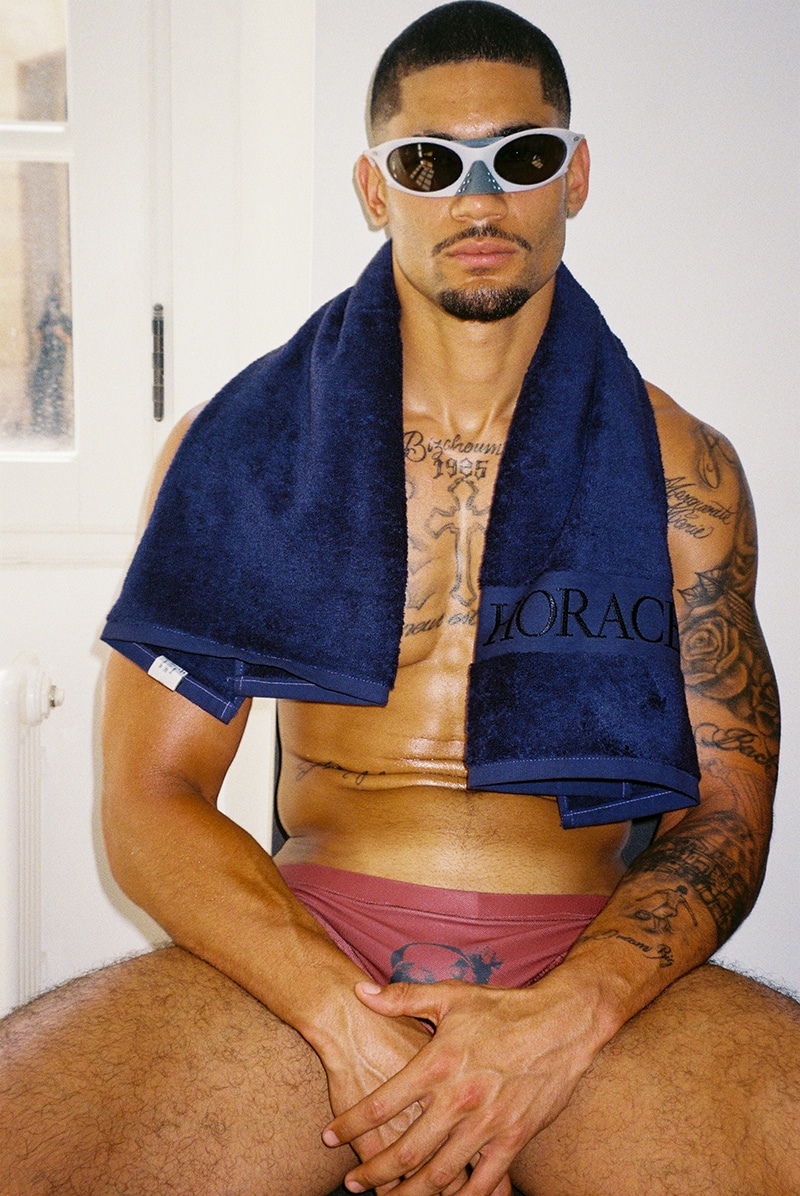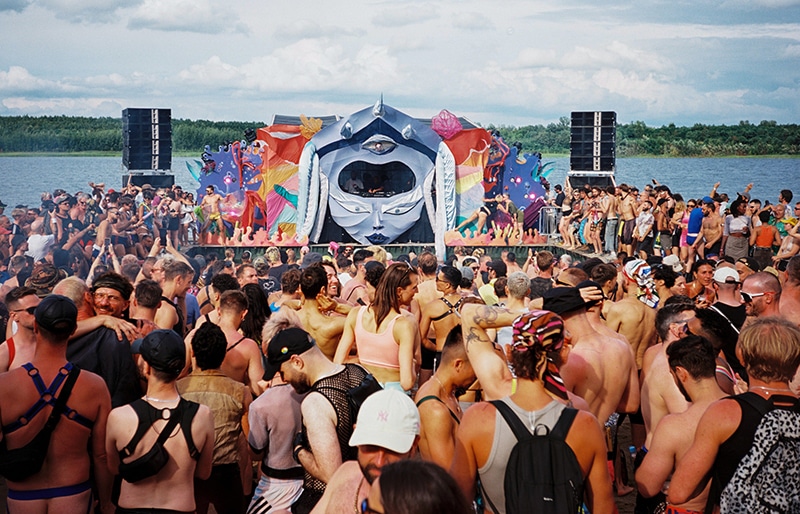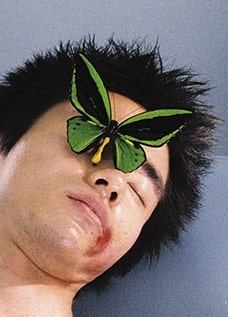The country’s future on the international fashion and cultural heritage scene seems to be destroyed due to the Russian invasion of Ukraine. Many believe the destruction of cultural assets is part of the Kremlin’s strategy to ‘erase’ Ukraine as an independent sovereign state.
“If we lose our culture we lose our identity,” said Onyschenko, the head of Lviv’s city council heritage protection office. “Lviv has always been multicultural. Poles, Germans, Jews, Armenians and Hungarians built it. It’s UNESCO listed.” She said she and her colleagues were working their way through a long list of objects that needed to be protected.
Russia’s war on Ukraine has been an all-round disaster. Its army has shelled densely populated cities, killing hundreds. Already more than five million refugees have fled abroad in Europe’s biggest exodus since the second world war. Alongside this humanitarian catastrophe, cultural assets have been bombed and damaged. They include a museum in the city of Ivankiv, north-west of Kyiv, which housed dozens of works by the Ukrainian folk artist Maria Prymachenko, whose work additionally depicted scenes of genocide under Stalin, some now lost forever.
Turning to Digitization
Led and staffed by volunteers from Europe and the United States, the Saving Ukrainian Cultural Heritage Online (SUCHO) initiative launched on March 1. The team has been working around the clock to preserve the data and technology of Ukraine’s cultural institutions, reports Sarah Cascone for Artnet. By March 14, SUCHO had backed up more than 1,500 websites, digital exhibitions, open-access publication and other digital resources.
We got the chance to sit down with a few key people from Ukrainian fashion industry and arts to discuss the importance of the preservation of its cultural heritage and fashion industry. We ask:
How can we encourage Ukrainian cultural heritage preservation?
Maria Matvienko, Public Relations Manager GOGOLA Agency: “This is an extremely important question, as culture is the foundation of any state. Ukraine’s cultural roots go deep into the history of mankind and there’s so much to discover. Ukrainians are doing the best they can covering the tangible monuments to keep them from being damaged by the missiles or shelling, and preserving the intangible.”
Ver esta publicación en Instagram
“First and perhaps the easiest thing that needs 0$ input is spreading information. Share what inspired you in Ukraine, search for something new, and discover the beautiful history which has been suppressed for years by the neighbor greedy for power.
Open doors to Ukrainian brands and projects. Grants and programs for development, ideas for cooperation, and integration — all of it would help the creative sector which is booming in Ukraine.
Support Ukrainian cultural institutions: museums and exhibitions. For example, at the moment the National Honchar museum which preserves many Ukrainian treasures is trying to save them by moving to safe places.
After all, when the war ends with the victory of Ukraine — tourism will definitely be a big part of its development. Come and visit our beautiful country — as no war will take away the breathtaking beauty and the spirit of our people.”
Marie Mokhova, Co-founder + Public Relations architect White Rabbit Agency: “There are two main problems concerning Ukrainian cultural heritage. First – even us, Ukrainians, are mostly unaware of it to a certain extent. Just to give you an example – when a museum in Kyiv region village Ivankove was bombed, where a lot of works by prominent Ukrainian artist Mariia Priimachenko were stored – for most of the people it was the first time they ever heard that there is such museum and that some of the most valuable Ukrainian pieces of art are there. The interest in Ukraine towards Ukrainian art and culture has been on an exponential growth over the years, it’s true, but still there are a lot of gaps that need to be filled, and it takes years of nation-wide education. So in order to preserve our heritage, we must be much more aware of it than we are now.
Second problem is about the actual preservation. Sadly, a lot of museums in Ukraine are heavily underfunded, they struggle to keep on going, to take proper care of art pieces and to attract foot traffic. The situation is, of course, much better in big cities like Kyiv, Odessa, Lviv, Kharkiv, where the cultural scene is active and where a lot of people come to visit. For the exhibition openings there you’d see big lines of people, it is quite popular – which is good. But there are also a lot of museums in small towns, villages even, that contain priceless pieces of art – and barely anyone knows about them. This is something that needs to be solved on a nation-wide level, with the help from the government, various international organizations, etc…
The least that can be done – is to educate yourselves, read, learn, and travel to Ukraine (once it’s possible again – hopefully, very soon).
And third problem is the fact that during the Soviet years, and before that, under the rule of Russian empire, a lot of cultural heritage that is originally Ukrainian – has been appropriated by Russia – our writers, our artists, our poets who were Ukrainian, were claimed to be Russian and belong to Russian culture. And this too comes down to the need for proper education.”
Daria Yankovska, Associate Professor of Artworks Restoration department at the Lviv National Art Academy and organizer of Lviv Fashion Week: “3 things are important for the preservation of Ukraine’s cultural heritage at the moment: Protection against possible shelling/missile strikes. For example, in Lviv smaller works of art are transferred to the shelters, and large sculptures, stained glass, etc. are strengthened so that they won’t be damaged by a possible shock wave (of course, in the case of a direct missile hit it cannot be saved). Cultural heritage organizations in Ukraine, together with conservators, decide how to preserve ledger works, e.g. special sarcophagi are planned to be made for large-format tempera paintings. All of this requires funds, as well as equipment that would ensure high-quality storage of artworks.
It is important to fix the current state of monuments and buildings while they still exist, preferably in 3D models. It will help in the restoration in case some of them will be destroyed. It also requires funds.
As a lot of Ukrainian cultural heritage has already been destroyed in this war, and it is obvious that even more buildings, monuments, and artworks will be destroyed, programs for their restoration are important. It would be helpful if foreign cultural heritage organizations undertook to develop concepts for this huge restoration. Funds are also needed here, so Ukrainian organizations, in particular Lviv ones, are ready to cooperate with foreign organizations that could help.
So, you can encourage Ukrainian cultural heritage preservation by spreading information about what is happening in Ukraine, about the threat to Ukraine’s cultural heritage, and of course by donating to Ukrainian cultural heritage organizations.”
Do you think online education can be a way of preserving Ukrainian cultural heritage?
Maria Matvienko: “One of many — for sure, as well as all kinds of digital support. Online education is an amazing opportunity to share history, language, art and many more.
There are some courses from different sources at the moment like ones from Udemy and Ukrainian Institute, but we believe that once this nightmare ends — many more initiatives will be launched on our end, filled with the desire to share the truth about the events. Ukraine has so much to offer, and online education is one of the ways to disseminate the information as widely as possible.”
Marie Mokhova: “It certainly can be one of the ways, yes. Online courses, lectures, webinars are a good way to make people know more about Ukrainian cultural heritage – within our country and far beyond it. It would be also incredible to have some sort of a map, a guide, as to where to look for art pieces in Ukraine and why they are valuable, what is their place and role in our history. This kind of project would need involvement also from our cultural institutions, professors, speakers, art connoisseurs, etc, but it would make a change.
Regarding online courses about Ukrainian fashion, art and cultural heritage, we don’t have the resources right now to create our own educational platform, but we’d gladly join forces with others for it, or take part in other platforms. We do read lectures occasionally – for example, in the School of Arts & Crafts created by Lilia Litkovska – we read lectures on fashion PR & communication. I myself took part in Chloé exhibition a few years back in Kyiv and read lecture there about the history of the Maison. It would be wonderful to tell the world more about Ukrainian fashion and culture, and we do it in many ways already – with our work with brands, with mentorship, with Kyiv Art & Fashion Days, but it feels like still a lot can be done and needs to be done.”
Daria Yankovska: “Yes, I think online education can provide information about Ukrainian culture and heritage, which are huge and diverse. Education and promotion are very important in preserving Ukrainian cultural heritage, it is the opportunity to attract people’s attention so that they can donate to relevant organizations involved in the protection of cultural heritage in Ukraine, or to reach European heritage institutions, which can help in preservation and restoration.
In a broad sense, we need the world to know exactly what is happening here in Ukraine and what Russians are doing to Ukrainian people, animals, and heritage.”
Yuliya Magdich, fashion designer: “I think it is because online courses will make knowledge about Ukrainian culture more available for people in different parts of the world. However, even despite the fact that the interest in Ukrainian culture is rather high now, there are few resources where foreigners could learn detailed and interesting information about it. This is why I am sure that online courses in Ukrainian history, art studies, literature and even the Ukrainian language would attract a wide variety of people. Today we need an educational project, which would unite the most vibrant artistic manifestations of the Ukrainian cultural heritage and show them to the world.”
For more, visit:
Saving Ukrainian Cultural Heritage Online (SUCHO)
Save life in Ukraine






































